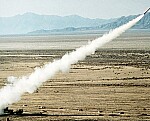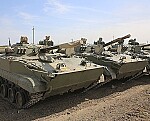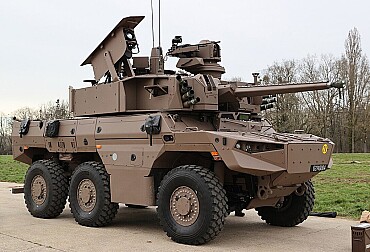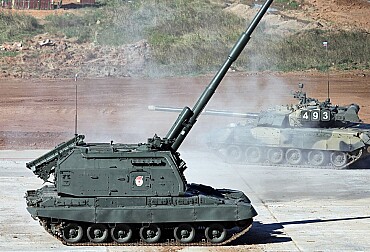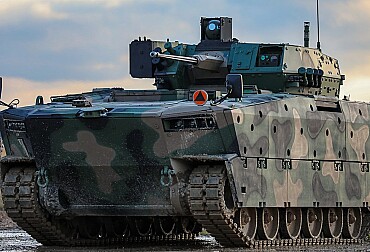The French VBCI wheeled IFV – a proven and solid armored vehicle with export difficulties
What was to become the VBCI, the French wheeled infantry fighting vehicle, could have been a multinational project. At the end of April 1998, it was announced that the ARTEC consortium had been formed under the aegis of the German companies Rheinmetall (64%) and KMW (36%). This consortium was to define the specifications, develop and produce the future eight-wheel drive infantry fighting vehicle shared by Germany, the United Kingdom and France. Paris wanted to replace its fleet of tracked AMX-10Ps, introduced in the early 1970s.
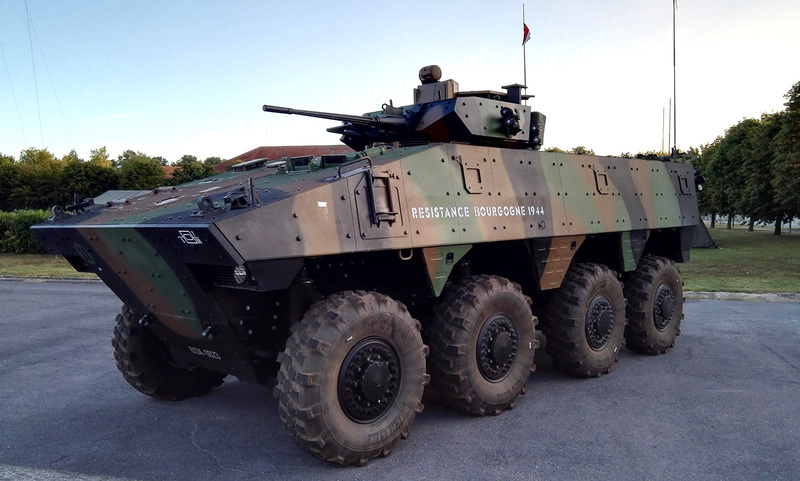
Due to profound differences over the options and use of the future vehicle, France and the United Kingdom left the ARTEC consortium in 2003, forcing it to reorganise. Left on its own, Germany was joined by the Netherlands, which launched the Boxer programme with the worldwide success it is known for today. For its part, the United Kingdom began its FRES (Future rapid effect system) programme on a tracked chassis and, in the end, ordered 508 Boxers at the end of 2018. In 1994, France, through the GIAT (Groupement industriel de l'armement terrestre), which later became Nexter, developed an experimental vehicle: the Vextra. Equipped with eight-wheel drive and an H-shaped transmission, it fitted in perfectly with the ARTEC project, and was followed in 1995 by the prototype proposed by Renault Véhicules Industriels (RVI): the X8A.
After France withdrew from ARTEC, the DGA (Délégation générale de l'armement) launched a new call for tenders, which was easily won by GIAT with a new vehicle, the L8, developed in collaboration with RVI. In order to facilitate communication between the two entities, a new Franco-French consortium was formed: "Satory Véhicules Militaires", with which the DGA signed a contract on 6 November 2000 for the acquisition of 700 vehicles – reduced to 628 following the promulgation of the 2014–2019 military programming law. For obscure reasons, the military authorities decided that the new vehicle would not be given a name, but would be designated by the abbreviation of the vehicle category to which it belonged: the VBCI (Véhicule blindé de combat d'infanterie).
This dull acronym did not prove to be an export advantage, as it evokes nothing, conjures up no image, does not honour an infantryman and is difficult to pronounce for potential foreign buyers. The initial French order breaks down as follows: 550 in the VCI version and 78 in the command version. The first 1:1 scale model was officially presented at Eurosatory in 2002, and the first prototype the following year – it was officially presented in 2004.
The construction of five other prototypes, including a VPC (Véhicule de protection des convois, Convoy Protection Vehicle), was immediately launched. The first two were ready in March 2005 and began various tests. The other three were delivered in the following months, with the last one in September 2005. Untill July 2008, these five vehicles underwent numerous trials, during which they travelled a total of 50,000 km and fired 18,000 shells. The VBCI seemed to be well and truly born, and the construction of the first 20 production vehicles for the infantry school in Montpellier, and the Canjuers training centre, was ordered. The first tranche comprised 42 conventional VBCIs, 12 fitted with the Eryx anti-tank missile and 11 VPCs.
Production has been carried out at Nexter Systems in Roanne since 1st December 2006, at a rate of 10 vehicles per month. The first regiment to receive the VBCI was the 35th Infantry Regiment in Belfort, from October 2008. The last VBCI was delivered to the French forces on 13th March 2015. In December 2010, following feedback from the Afghan theatre, a contract was signed between the DGA and Nexter to study ways of improving the protection of the last 95 VBCIs. A new contract was signed in June 2013 for the first tranche of 48 VBCIs, whose combat weight was increased from 29 to 32 tonnes, and another in September 2014 for the second tranche of 47 vehicles. The first prototype of the modified VBCI was declared operational on 24 September 2014, and the first third was delivered to units from April 2015.
Theoretically, a regiment is equipped with 72 VBCIs and 14 Eryx anti-tank VBCIs, distributed among the five combat companies with four sections of four vehicles. There are 12 VPCs, one per combat company for the deputy officer, the unit commander is in VBL2L. The remaining seven VPCs are assigned to the regimental staff. The initial plan was to equip eight infantry regiments, but this changed from 2022 with the entry into service of the lates Griffon vehicles, during which year only the instruction and training centres and the armoured brigade regiments retained the VBCI. All the other regiments were to be equipped with the new Griffon.
On the export market, the VBCI was not as successful as expected, and suffered a number of setbacks, often against the same adversaries. In April 2009, Spain, which wanted to replace its BMR-600s, considered buying the VBCI. It lost out to the Mowag Piranha V (Dragon), as it did in 2015 in Denmark (400 units). In 2012, the VBCI again lost out to the Turkish Rabdan 8×8 in its bid to conquer the UAE market (700 units). In 2014, the VBCI suffered its first failure against the German Boxer in Lithuania (88 units). In September 2015, at the DSEI show in London, Nexter presented a model specifically designed for export, called VBCI 2 or Mk2, in which 10 million euros have been invested. The first potential buyer was the United Kingdom, as part of its FRES programme. A test campaign was carried out, but the vehicle was not selected. In December 2020, Doha opted for the German Boxer.
Since its deployment in Lebanon and Afghanistan, a demanding theatre par excellence where it has given complete satisfaction, the VBCI has been 'battle proven'. It was also deployed as part of the "Barkhane" operation in the Sahel-Saharan strip, a theatre that weared out men and equipment prematurely, where it was once again unanimously appreciated. In May 2020, the French Ministry of Defence reported that it had 606 VBCIs in service out of the 628 purchased. This difference of 22 units was justified by intensive use in the Sahel-Saharan strip, requiring partial or complete rebuilding.
Proven in combat, the VBCI significantly increases infantry capabilities in terms of mobility, protection, observation and aggression. Each of these capabilities is further enhanced by the digitisation of the battlespace (geolocation, information management and fluid command). The VPC version is armed with a 12.7 mm machine gun mounted on a remotely-operated turret, while the VBCI is armed with a 25 mm cannon mounted on a single-seat turret. The different versions share a common architecture based on an aluminium body to which overprotection plates are fitted.
Crews
- Up to 11 fully-equipped soldiers (including driver and gunner)
- The crew is made up of a driver, a tactical leader and a gunner, and can carry a combat group with all its equipment (9 men including the tactical leader).
Dimensions
- Length: 7.8 m
- Width: 3.7 m
- Height: 3.5 m
- Weight: 28 t
Performance
- Engine: 550 hp
- Range: 750 km
- Maximum speed: 100 km/h
- Crossing capacity: gradient: 55% / fording 1.20 m / slope: 30% / vertical obstacle: 0.6 m



